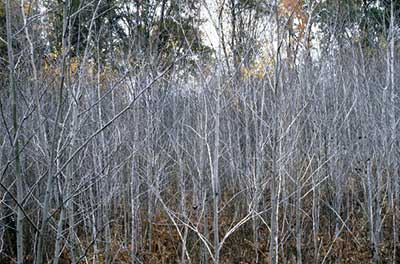American Woodcock
By Rick Horton, National Wild Turkey Federation

Also known as the timberdoodle, Labrador twister, bog sucker, and swamp bat, the woodcock is a popular upland game bird among eastern hunters known for its rapid twisting flight. Closely related to shorebirds, the woodcock migrates south each winter.
Woodcock stay in the same general area all season, but move around a lot in search of the proper soil moisture conditions for their preferred food: earthworms. They often return to the area where they were hatched to breed the following spring.
Woodcock populations are generally stable across Wisconsin and the Midwest, but slowly declining across their entire range. Current research suggests that the loss of shrub, old field, and young forest habitat is to blame.
Habitat needs
Woodcock are closely associated with upland brush, old fields, and seedling/sapling forests on rich soils. They feed primarily on earthworms, which they find by probing in the soil with their bills. Their activity leaves characteristic probe holes and “splash” or whitewash in feeding areas. Adults also eat nematodes, arthropods, and insects. Young woodcock feed primarily on insects during the first few weeks of life.

Alder is a nitrogen-fixing plant that produces rich soils with abundant earthworms. Woodcock feed in upland alder thickets, young forest stands, and river bottoms during the day, roosting in shrubby, open fields larger than three acres in size at night.
Woodcock perform their spring courtship rituals in grassing openings adjacent to brushlands, making old fields perfect woodcock habitat. Hens rear young in dense, regenerating hardwood stands.
Recommendations for attracting more woodcock
- Keep upland alder brush in a young state by periodically burning it, or by mowing or shearing it in winter. Scatter the slash over the site. As a general rule, alder is too old to provide adequate shelter for woodcock when its stems grow horizontally. In riparian zones (areas next to streams), shear 70-foot wide strips of alder perpendicular to the water source, every 280 feet. Repeat every 10 years to maintain a 50-year rotation.
- Maintain old fields and open areas through periodic mowing or prescribed burning.
- Create a half-acre opening for every 10 acres of forest for courtship display areas, also known as peenting grounds. Roads and log landings will do. Also, maintain some three-acre or larger openings for roosting at night.
- Maintain young aspen forests in wet areas, particularly in riparian areas with rich soils.
